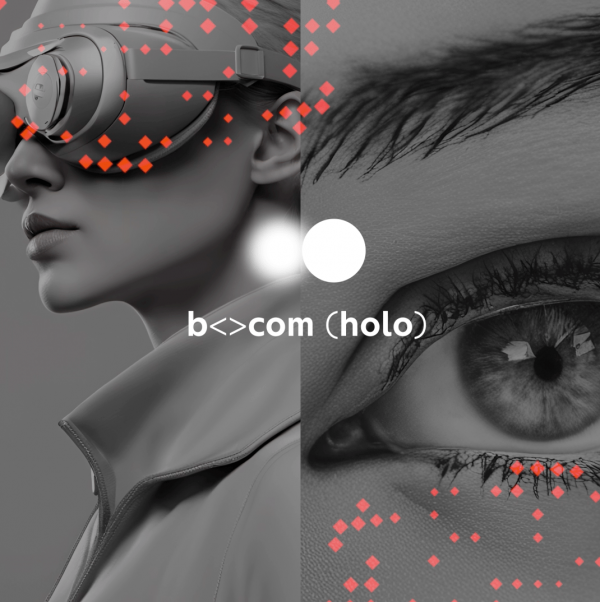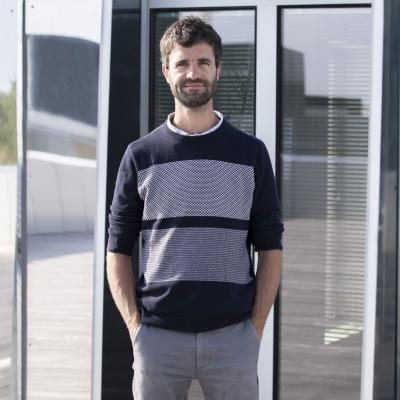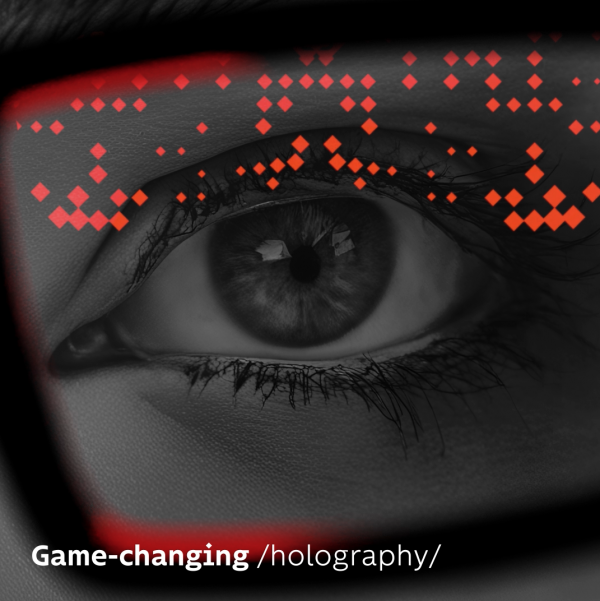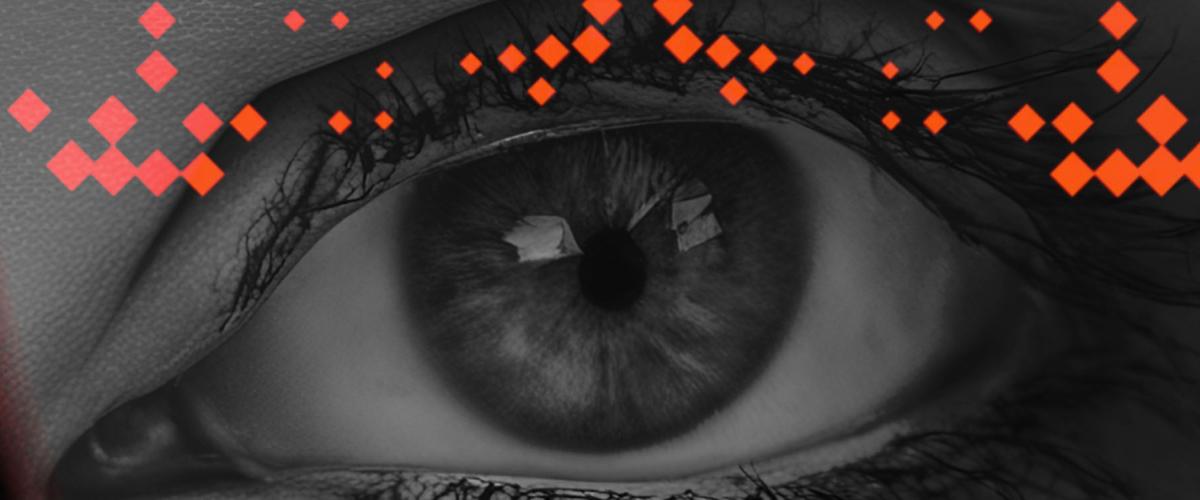This December 13th our expert on holographic technology, Antonin Gilles, will head to Siggraph Asia, the world’s best event for computer graphic images. He’ll be in the arena with other major players to present one of the latest innovations to emerge from the minds of b<>com researchers: a prototype holographic headset that compiles several key functionalities.
Hello Antonin. You've already explained holography and its main principles to us. What new features were developed at b<>com this year?
This year, we've developed a number of new features. The first is hologram compression. Until now, our work has focused strictly on still holographic images. We're now taking into account temporal redundancy in holographic video compression using motion estimation and compensation.
The second is digital hologram generation. We've introduced an algorithm into a small processing unit for real-time computer generated hologram calculation. This hologram computing will be directly embedded into augmented or virtual reality headsets. To make this a reality, we've created a prototype headset with the processing unit in it. We’ve miniaturized the optical system and, above all, the electronics controlling the screens. This makes it possible to use a headset that’s not connected to a computer. Other components have also been introduced into the headset to offer full color holographic glasses. Combining all these components in a headset that is both portable and autonomous, in other words wireless, is a first!


All augmented and virtual reality applications can benefit from what holographic technology has to offer.
You'll be presenting a paper on this prototype at Siggraph Asia on December 13th. Can you tell us more about this event?
Siggraph Asia is a major conference on "computer graphics”, or digital image synthesis, which encompasses all the technologies that enable animated films and video games to exist. There's also a focus on 3D visualization devices, an area where holographic technology made its appearance some time ago. Every year, there are some very interesting and well-developed papers on the subject, which go far beyond simple proof of concept. There are prototypes, real images, that you’re not likely to find elsewhere. It's a high-ranking, rather prestigious conference, and being a part of it is recognition of our expertise in holography.
On the holography front, six papers will be presented this year, not just from b<>com, but also from Meta, MIT and Seoul University, all renowned players in the field. So, it's a real pleasure for us to be able to present a paper alongside them and discuss our respective work together.
To my knowledge, this is the first time a paper has appeared on a prototype headset such as the one from b<>com. There have already been other papers on similar subjects, with reduced optical systems or with real-time algorithms, but they weren’t portable.
What applications will holography bring in the near future and beyond?
All augmented and virtual reality applications can benefit from what holographic technology has to offer. It allows for greater visual comfort, so you can use VR and AR devices much more comfortably for longer periods of time. Today's devices cause symptoms of cybersickness, which may include headaches, eye strain, nausea, etc. Some even find them impossible to use.
Holography solves these problems, even if the technology still lacks the maturity of the stereoscopic virtual reality used today. In the short term, it’ll mainly be used in the professional realm, with relatively simple objects that offer significantly enhanced visual comfort. In the medium term, we'll be able to imagine more complex scenes with objects located in space, with texture, reflections and so on. In the longer term, we'll be able to walk around in an entirely virtual holographic world, as we'll soon be able to do with stereoscopic virtual reality.




